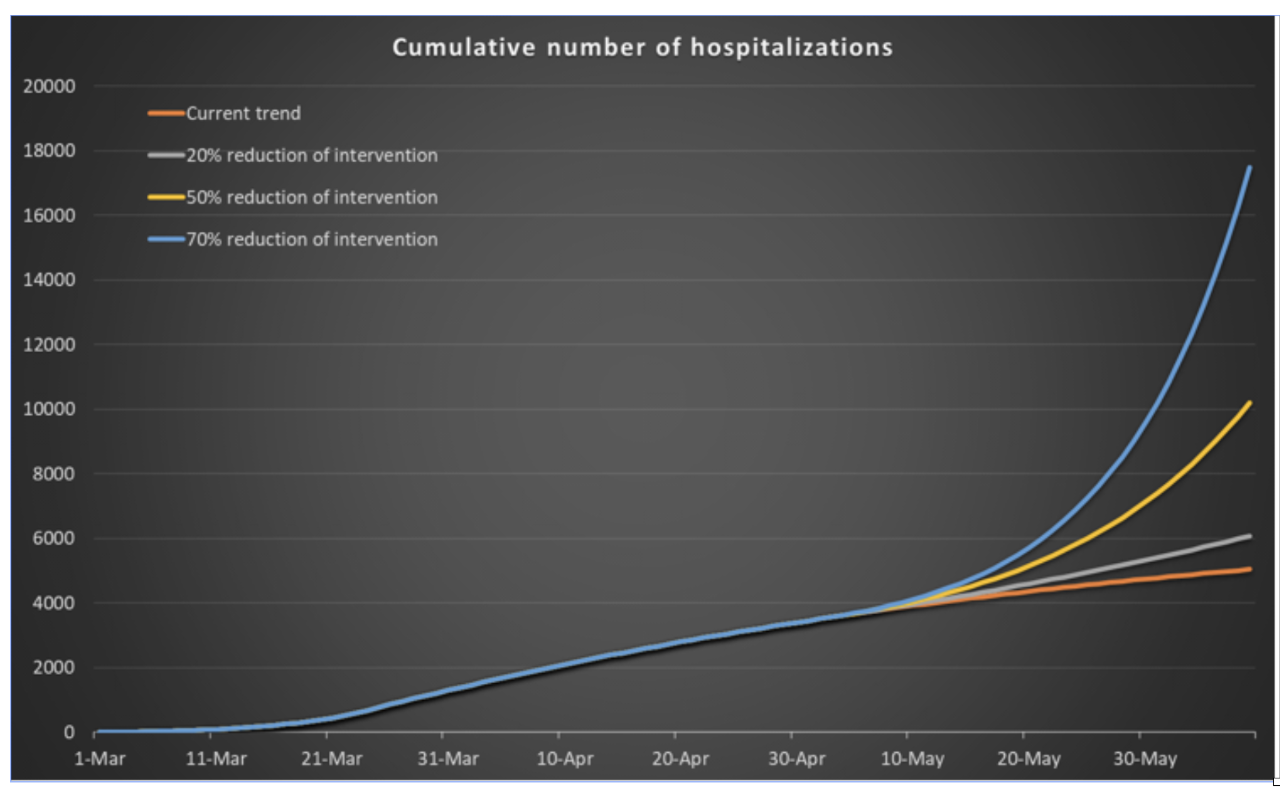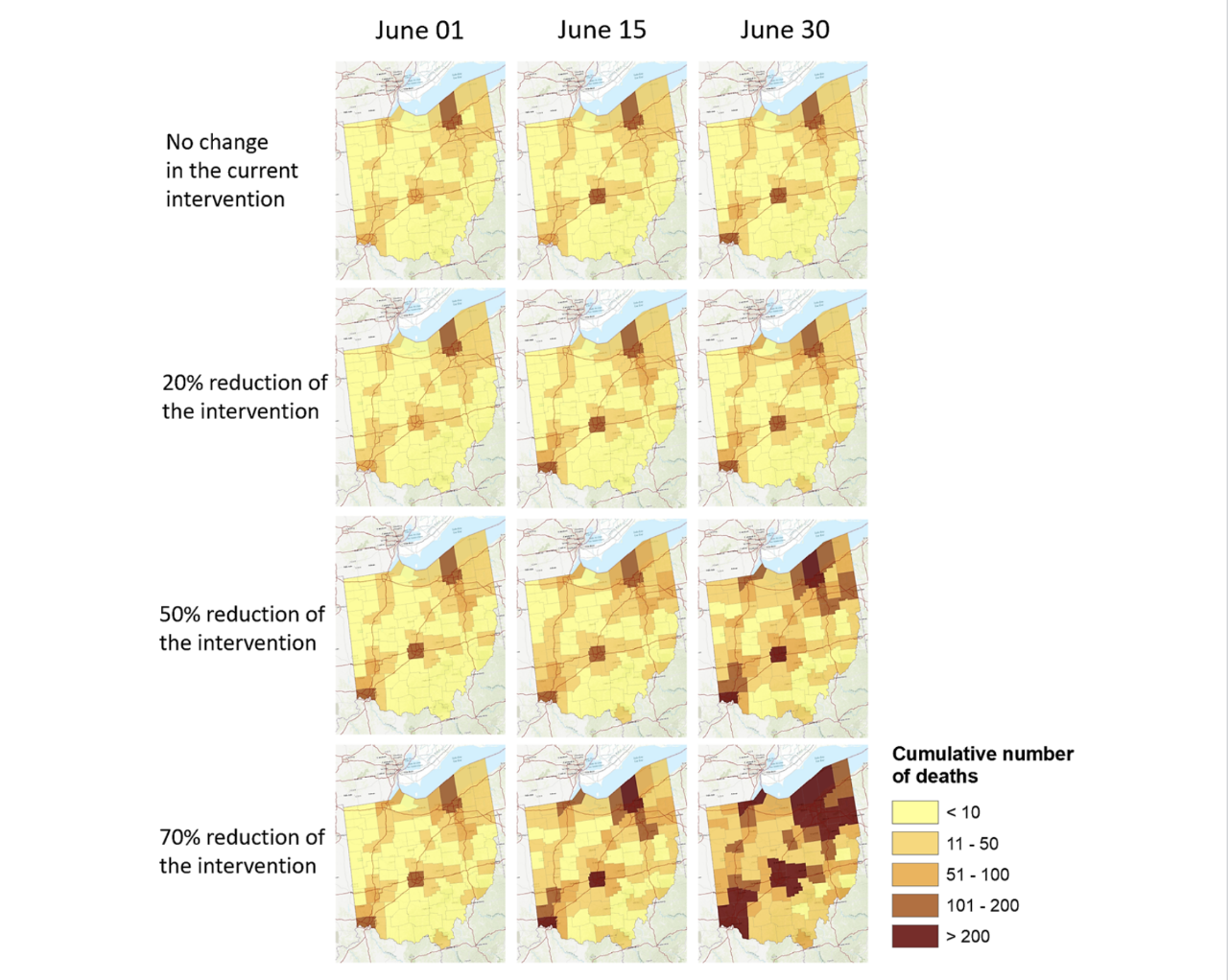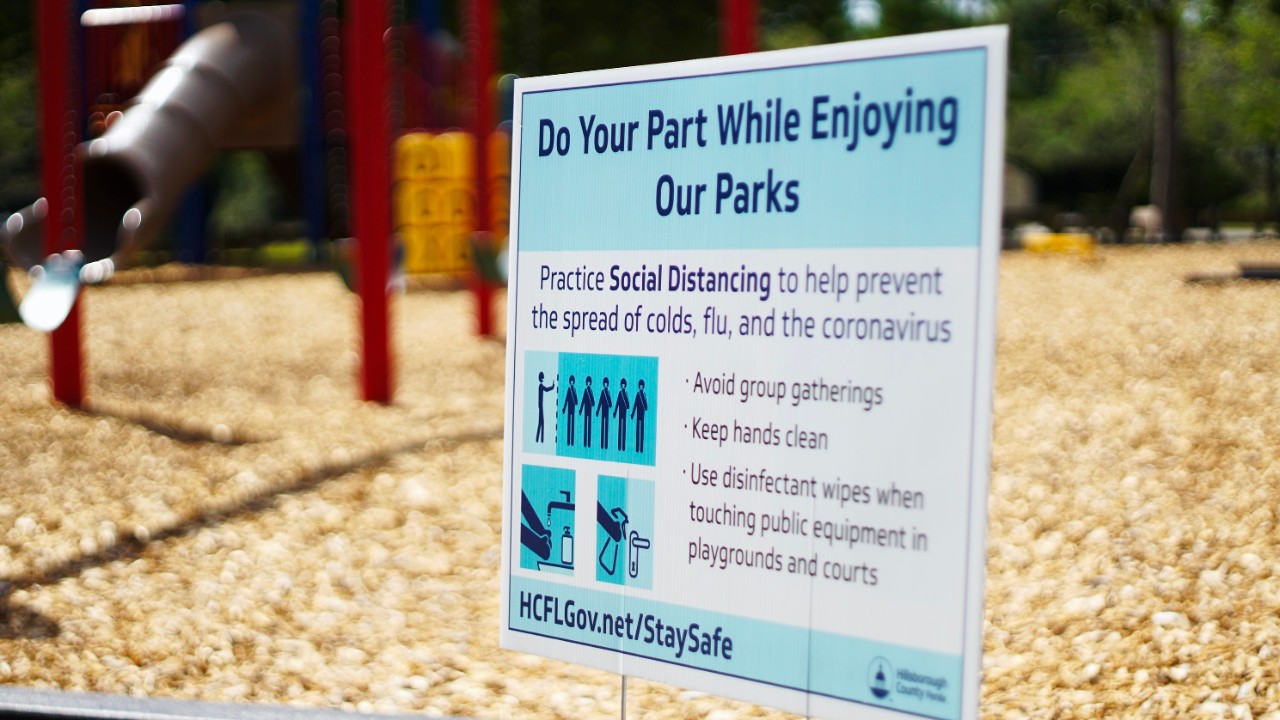
UC provides road map to reopen Ohio
State could require intermittent closures to curb ICU admissions
Ohio will be able to meet its demand for critical care from COVID-19 with minimal relaxation of its social-distancing policies, according to a new public health policy brief released Wednesday by the University of Cincinnati.
But significant relaxation of social distancing policies could require the state to enact a new round of temporary closures after just six weeks, according to UC’s Geospatial Health Advising Group.
“There could be more resistance to going back to stricter social distancing approaches. That’s why it’s important to start telling people now what could happen,” said Diego Cuadros, assistant professor of geography in UC’s College of Arts and Sciences.
Critical care across much of rural Ohio will reach capacity far sooner if social-distancing is relaxed significantly, according to UC’s analysis. The researchers recommend increasing the capacity of critical care in these counties to address the crisis.

UC's Geospatial Health Advising Group projected the differences in hospitalizations from COVID-19 in Ohio through May 30 with varying degrees of social distancing. Graphic/UC
“This provides evidence confirmation that the decisions the state is making are the right ones with a phased reopening,” said Neil MacKinnon, co-author and dean of UC’s College of Pharmacy.
“A lot of people would like everything to reopen, but slow relaxation of restrictions will not create a burden on hospitals or adversely affect death rates.”
UC researchers created an interactive map of Ohio outlining the spread of COVID-19 hospitalizations and deaths under different social-distancing scenarios.

UC College of Pharmacy Dean Neil MacKinnon. Photo/Colleen Kelley/UC Creative + Brand
UC’s College of Pharmacy and its departments of math and geography conducted its analysis using data collected from March 1-23 before Ohio implemented its stay-at-home order. During that period the virus was on pace to cause 13,000 hospitalizations, killing 1,080 people in Ohio by April 15 until the state enacted measures such as mandatory closures and other social-distancing practices.
UC’s analysis found that social distancing saved 687 lives and cut hospitalizations by more than 10,500 cases through April 15.
Now UC researchers project Ohio will see an estimated 4,816 new hospitalizations and 1,073 deaths by June 1 under current social-distancing policies.
UC researchers determined that social distancing has cut the growth rate of coronavirus infections in Ohio by about 35%. Relaxing these measures moderately (defined as policy changes that reduce this mitigation impact by 50%) will lead to an estimated 7,682 hospitalizations and 1,367 deaths. Relaxing the social-distancing policies significantly (defined as policy changes that reduce the mitigation impact by 70%) will lead to an estimated 10,846 hospitalizations and 1,629 deaths by June 1, UC researchers say.
Likewise, moderate reopening in Ohio will mean 67 of Ohio’s 88 counties will reach full ICU bed capacity by June 30. Significant reopening will lead to ICU bed capacity by June 13 and more than 7,000 ICU beds statewide would be needed by June 30.
We can’t eliminate risk, but we can reduce it.
Diego Cuadros, UC Health Geography and Disease Modeling Lab

UC's Geospatial Health Advising Group projected COVID-19 fatalities through June 30 in counties across Ohio under different scenarios of relaxing social distancing practices. (Graphic/UC)
Cuadros said it’s difficult to say which social-distancing measures have proven most effective at reducing the infection rates. Researchers around the world are studying that now, he said. Ohio and other states implemented widespread changes, from closing schools and businesses to postponing or canceling public events and issuing stay-at-home orders.
Now the first of those states have lifted their restrictions with many others like Ohio planning gradual reopenings.
“A very strict lockdown is not going to be sustainable. There will be an economic impact that would be difficult to sustain,” Cuadros said. “But we have to be aware that the virus is still here and it’s not going anywhere. When interventions are lifted, the virus will take off again.”
If Ohio’s current interventions stay in place through June 30, 55 of the state’s 88 counties will have fewer than 10 deaths from COVID-19. Under moderate reopening, just 25 counties will have fewer than 10 deaths while 27 counties will have more than 50 deaths by June 30. With significant relaxation of social distancing, 84 of Ohio’s 88 counties will have more than 10 deaths by June 30. Likewise, 50 counties will have more than 50 deaths and 20 counties will have more than 200 deaths.
Like Ohio’s population, the state’s critical care services are distributed in varying densities. Rural counties will reach critical care capacity sooner than more populated counties. UC recommends addressing ICU capacity in some of these counties to provide an effective intermittent social-distancing approach across Ohio.
UC’s Geospatial Health Advising Group plans to expand its projections nationwide and in Canada as well.
“Just because people want to go back to normal doesn’t mean it’s going to happen,” he said. “We can’t eliminate risk, but we can reduce it.”
Featured image at top: Cincinnati celebrates the Blink light festival that illuminates the skyline. Photo/Joseph Fuqua II/UC Creative + Brand

Social distancing and other mitigation efforts are helping to slow the spread of coronavirus infections, according to UC experts. Photo/Jordan Hopkins/Unsplash
Impact Lives Here
The University of Cincinnati is leading public urban universities into a new era of innovation and impact. Our faculty, staff and students are saving lives, changing outcomes and bending the future in our city's direction. Next Lives Here.
Stay up on all UC's COVID-19 stories, read more #UCtheGood content, or take a UC virtual visit and begin picturing yourself at an institution that inspires incredible stories.
Related Stories
UC celebrates record spring class of 2025
May 2, 2025
UC recognized a record spring class of 2025 at commencement at Fifth Third Arena.
UC students recognized for achievement in real-world learning
May 1, 2025
Three undergraduate University of Cincinnati Arts and Sciences students are honored for outstanding achievement in cooperative education at the close of the 2024-2025 school year.
‘Doing Good Together’ course gains recognition
May 1, 2025
New honors course, titled “Doing Good Together,” teaches students about philanthropy with a class project that distributes real funds to UC-affiliated nonprofits. Course sparked UC’s membership in national consortium, Philanthropy Lab.
